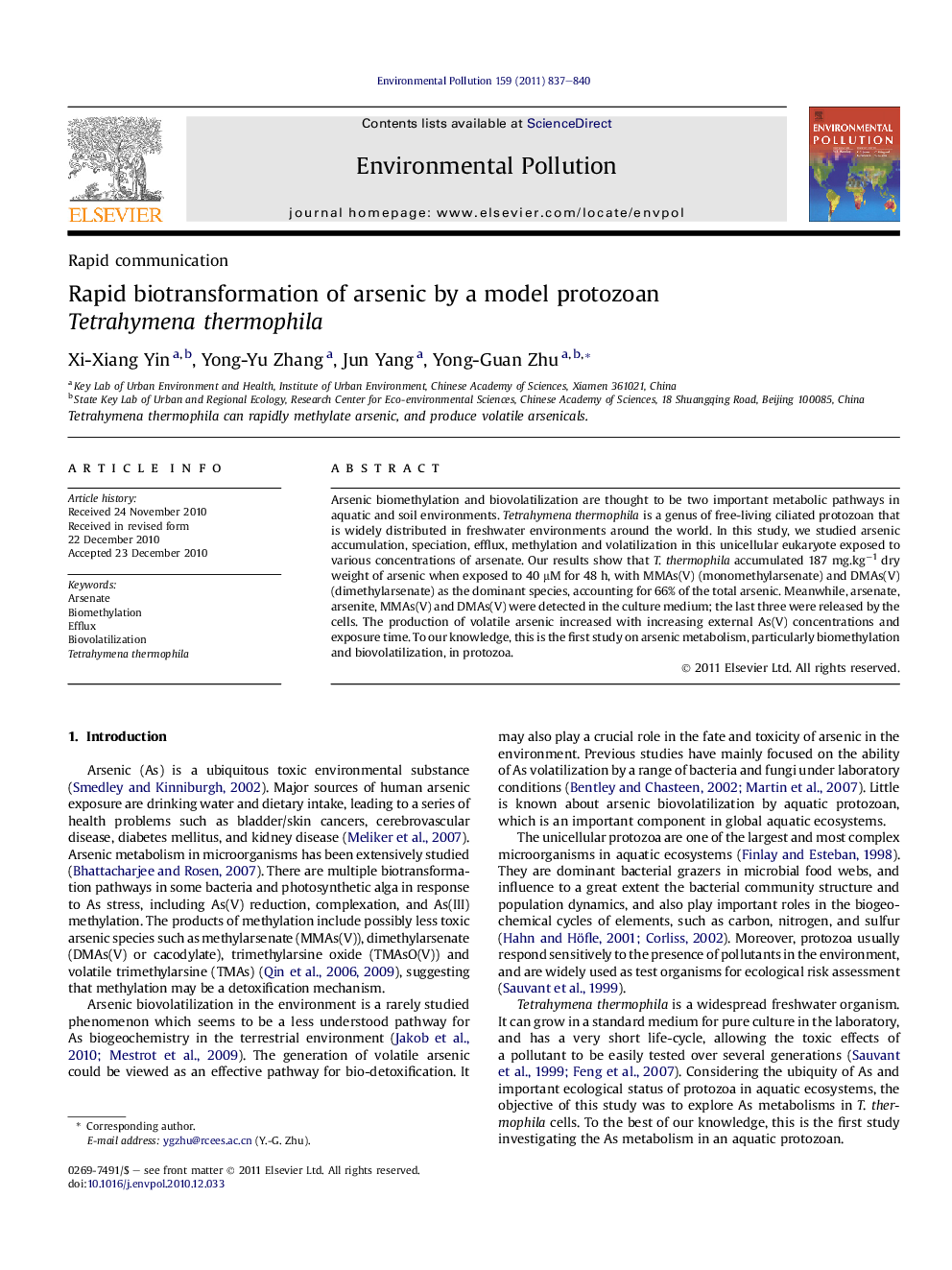| Article ID | Journal | Published Year | Pages | File Type |
|---|---|---|---|---|
| 4424831 | Environmental Pollution | 2011 | 4 Pages |
Arsenic biomethylation and biovolatilization are thought to be two important metabolic pathways in aquatic and soil environments. Tetrahymena thermophila is a genus of free-living ciliated protozoan that is widely distributed in freshwater environments around the world. In this study, we studied arsenic accumulation, speciation, efflux, methylation and volatilization in this unicellular eukaryote exposed to various concentrations of arsenate. Our results show that T. thermophila accumulated 187 mg.kg−1 dry weight of arsenic when exposed to 40 μM for 48 h, with MMAs(V) (monomethylarsenate) and DMAs(V) (dimethylarsenate) as the dominant species, accounting for 66% of the total arsenic. Meanwhile, arsenate, arsenite, MMAs(V) and DMAs(V) were detected in the culture medium; the last three were released by the cells. The production of volatile arsenic increased with increasing external As(V) concentrations and exposure time. To our knowledge, this is the first study on arsenic metabolism, particularly biomethylation and biovolatilization, in protozoa.
